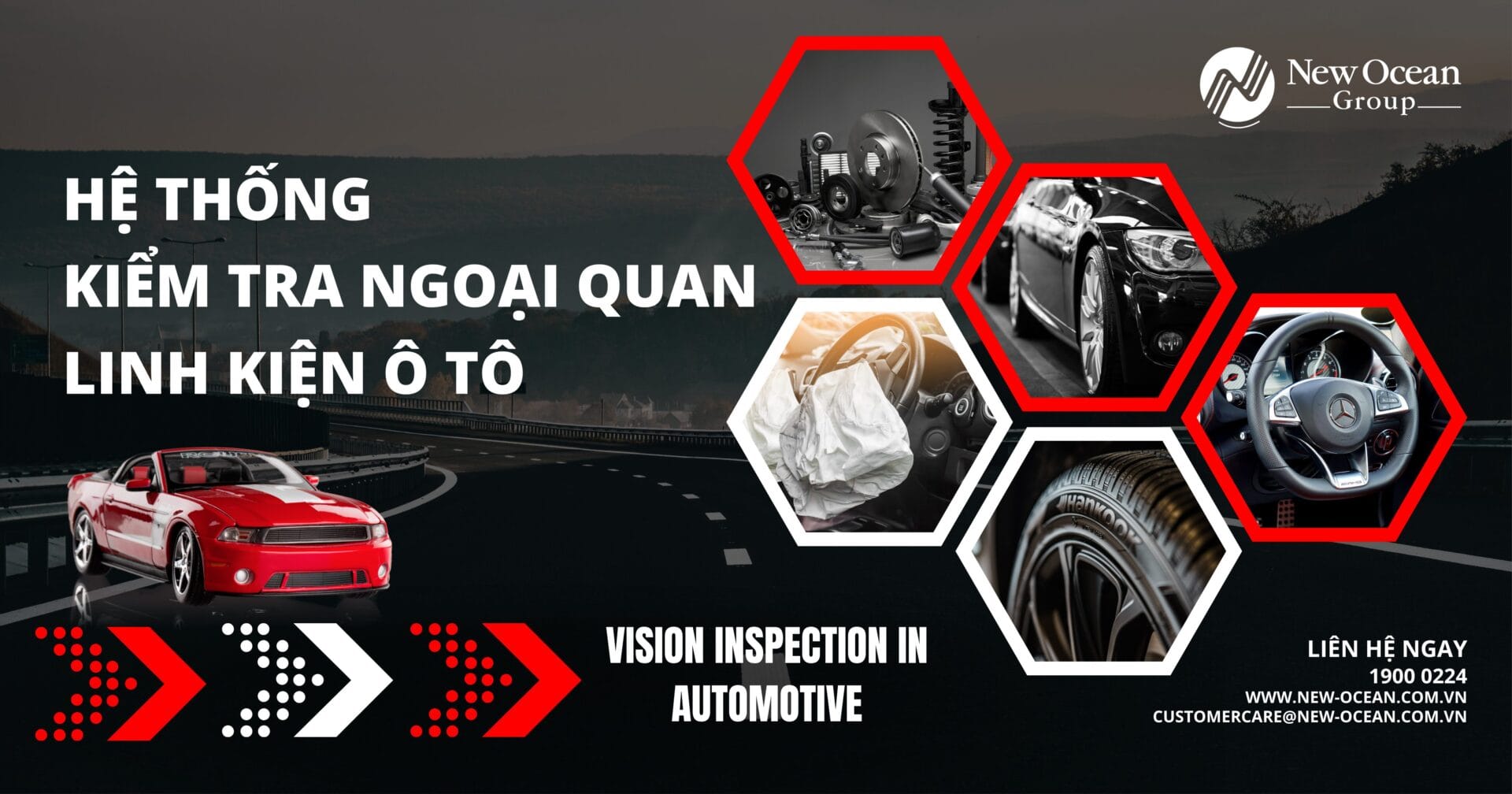As the global automotive industry undergoes rapid transformation, the demands for product quality and safety are becoming more strict than ever. Automated visual inspection systems are no longer just advanced technologies—they have become strategic requirements for modern manufacturing plants. By investing in automated visual inspection, manufacturers can boost competitiveness, protect brand reputation, and confidently integrate into the global supply chain.

The automotive industry is regarded as one of the sectors with the most demanding quality requirements, as products have a direct impact on user safety and property. Even the slightest defect in the production of a single component can lead to serious consequences—from common technical failures to serious accidents. This imposes tremendous pressure on manufacturers, forcing them to maintain rigorous and comprehensive quality control processes. The requirements are even more stringent for companies aiming to participate in the global supply chain.
Overall, the risks businesses face when product quality is not guaranteed are immense and potentially devastating. Financially, a single mistake may result in costly product recall campaigns.
Manual inspection processes come with numerous hidden costs. Repetitive labor expenses, material waste due to defective products, and opportunity costs caused by slower inspection speed all hinder the overall productivity of the entire production line. For managers, these represent significant losses that must be addressed.

Để trực quan hóa vấn đề này, chúng ta có thể so sánh hiệu quả giữa hai phương pháp:
| Criteria | Manual Inspection | Automated Inspection |
| Speed | Slow, dependent on human pace and endurance. | Extremely fast, operating continuously 24/7. |
| Accuracy | Moderate, easily affected by human factors, prone to missing minor defects. | High, capable of detecting “invisible” flaws beyond the human eye. |
| Repeatability & Consistency | Inconsistent across shifts and inspectors. | Nearly 100% consistent results for every product. |
| Data Traceability | Limited, data often recorded manually. | Optimized, with detailed real-time data storage and reporting. |
| Labor Cost | Not optimized, requiring repetitive labor, training, and supervision costs. | Significantly optimized, with workforce shifted to higher-value tasks. |
Efficiency Comparison: Manual Inspection vs. Automated Inspection
Automated visual inspection technology is widely applied across multiple stages of automotive manufacturing, from small components to the entire vehicle body.

Investing in automated visual inspection systems delivers tangible business value, directly impacting operational efficiency and profitability.
Automation significantly shortens production time and enables factories to operate continuously 24/7 without human-related interruptions. Robotic arms can perform repetitive tasks such as welding, assembly, or inspection with exceptional speed and precision. For example, a welding robot can complete hundreds of welds on a car body within minutes—tasks that would take hours if done manually. This transformation not only increases output but also enhances process continuity, allowing manufacturers to quickly respond to market demand.
One of the greatest advantages of automation is its ability to improve product quality by virtually eliminating human errors. Robotic systems operate with programmed precision, ensuring every product meets consistent quality standards. Consistent quality forms the foundation for building trust and reputation with customers. This creates a sustainable competitive advantage, helping businesses retain existing clients while attracting new ones—especially in today’s highly competitive automotive market.
Although the initial investment may be substantial, the long-term return on investment (ROI) from automated visual inspection systems is undeniable.
| Technology Feature | Operational Benefits | Business/Financial Benefits |
| Ultra-fast inspection speed | Increased productivity & output, 24/7 operations. | Reduced production cost per unit, enhanced market responsiveness. |
| Superior accuracy | Minimized human errors, ensured consistent quality. | Material savings, reduced rework costs. |
| Detection of “invisible” defects | Improved production continuity, enhanced reliability. | Avoided warranty & recall costs, safeguarded brand reputation. |
| Data Traceability | Strict quality control, compliance with international standards. | Market expansion, integration into the global supply chain, attraction of major partners. |
ROI Analysis Table: Business Benefits of Automated Visual Inspection Systems
The analysis above translates technical features into financial and operational metrics, helping managers easily calculate ROI and make data-driven investment decisions.
Vietnam is increasingly establishing itself as an attractive investment destination for high-tech manufacturing enterprises. Data shows that foreign direct investment (FDI) from advanced economies such as Japan is growing strongly in this sector. Major Japanese corporations like Kyocera have already shifted production lines to Vietnam to expand their operations.
These companies bring not only capital but also strict quality and technology standards. To become a reliable link in their supply chains, automotive component manufacturers in Vietnam must upgrade their standards. Investing in automated visual inspection systems is one of the key factors to meet the requirements of these global partners. This presents an opportunity for Vietnam to transform from a “low-cost labor workshop” into a “high-tech manufacturing hub” on the world production map.

With over 20 years of experience in automation and quality control, New Ocean has partnered with numerous FDI enterprises in automotive component visual inspection, bringing Vietnamese technology to international markets—particularly Japan, a country renowned for its exceptionally strict quality standards. This marks a significant milestone for the advancement of Vietnam’s technology sector.
In summary, the transition from manual to automated visual inspection is not merely a substitution—it is a revolution in quality management thinking. It empowers Vietnamese automotive manufacturers not only to optimize costs but also to eliminate risks, strengthen their reputation, and confidently integrate into the global supply chain. The race has already begun, and the pioneers will be the ones to seize the advantage.
To reach global standards and affirm their position in the automotive industry, adopting automated visual inspection systems is a strategic move that cannot be delayed.
Contact us today to receive expert consultation and a customized solution tailored to your factory’s scale and specific requirements.
------------------------------------
New Ocean Automation System Company Limited
Website: New Ocean Automation System
Hotline: 1900 0224
